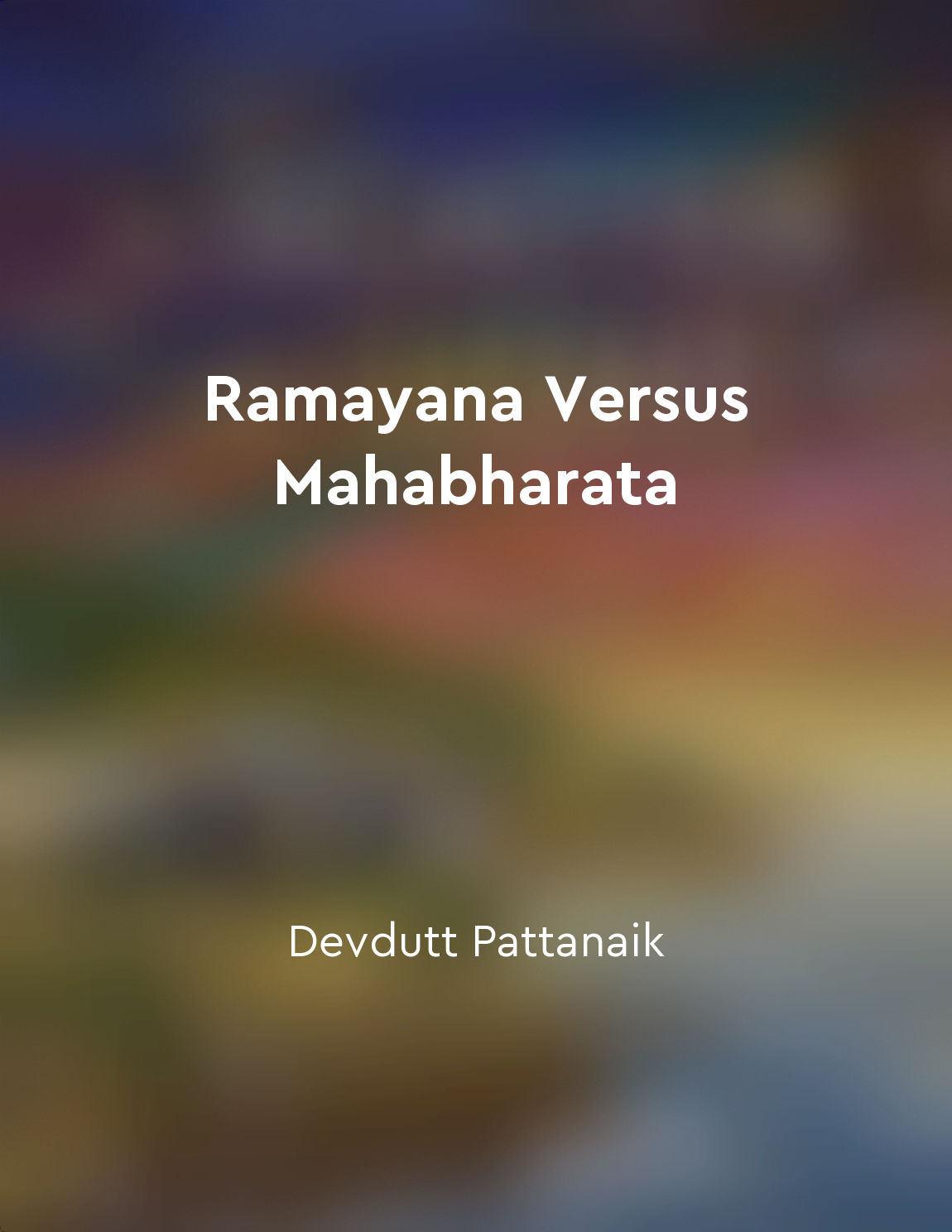Ramayana's Valmiki is sage, Mahabharata's Vyasa is storyteller from "summary" of Ramayana Versus Mahabharata by Devdutt Pattanaik
In the Ramayana, Valmiki is portrayed as a sage, a seer who is able to see the past, present, and future. He is a wise and learned man, respected for his knowledge and insight. Valmiki is not just a poet, but a spiritual guide, whose words hold great significance and truth. He is seen as a figure of authority, whose teachings are meant to guide and inspire others. Valmiki's Ramayana is more than just a story—it is a spiritual text that imparts moral lessons and philosophical teachings. On the other hand, Vyasa in the Mahabharata is depicted as a storyteller, someone who spins tales and weaves narratives. He is not a sage in the traditional sense, but a bard who uses words to entertain and enlighten. Vyasa's Mahabharata is a grand epic filled with drama, intrigue, and complex characters. It is a narrative that captivates the audience with its twists and turns, its larger-than-life heroes and villains. Vyasa's storytelling skills are evident in the way he constructs the Mahabharata, with its multiple subplots and intricate plotlines. While Valmiki's Ramayana focuses on the journey of Prince Rama and the trials he faces, Vyasa's Mahabharata is more expansive, encompassing the stories of the Pandavas and Kauravas, as well as a host of other characters. Valmiki's sage-like wisdom is reflected in the moral dilemmas faced by Rama and his companions, while Vyasa's storytelling prowess shines through in the epic battles and political intrigues that make up the Mahabharata.- Valmiki's Ramayana is a spiritual and philosophical text that delves into the deeper truths of life, while Vyasa's Mahabharata is a grand epic that entertains and educates through its intricate storytelling. Both Valmiki and Vyasa play important roles in shaping the narrative of their respective epics, each bringing their own unique perspective and style to the stories they tell.


